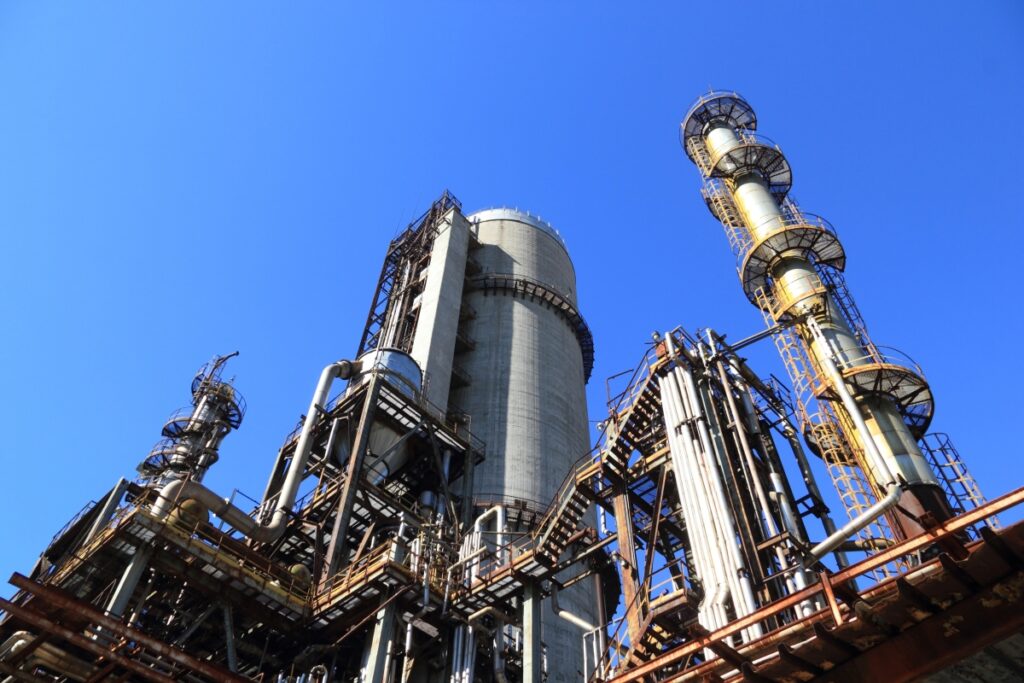Petrochemicals Introduction
Petrochemicals are derived from petroleum or natural gas. Naptha is also one of the substances that play an integral role in the production of petrochemicals. They are derived from hydrocarbons such as propane, ethane, butane, or other components separated from crude oil and natural gas liquids.
Petrochemicals define hydrocarbon-based compounds that are extensively used in the chemical industry. A manufacturing facility known as a cracker is used to produce petrochem products. After the crude distillation process, the separated hydrocarbons are fed to the hydrocracker. The cracker facilitates the breakage of hydrocarbon bonds which in turn allows the formation of useful chemicals. Thus the cracker serves as intermediate process equipment.
Ethylene is one such example, the monomer is used to produce polyethylene through the process of polymerization. Polyethylene plays an integral role in the plastic manufacturing industry.
Petrochemicals Market Outlook
Petrochemicals contribute to a major segment of the commodity chemicals market. Petrochem products have a vast value chain that includes verticals like clothing, tires, digital devices, packaging, detergents, and countless other everyday items. Thus petrochemical products play an integral role within modern societies.
As of 2018, it was recorded that petrochemical feedstock accounted for roughly 12% of the global oil demand. A rise in demand margins is expected owing to the growth in usage of consumer chemical products. This growth in margins is primarily due to the rise in purchasing power of the population.
Between the years 2000 and 2016, the petrochemicals market witnessed marginal growth owing to the increased demand for ethylene-based products. The annual production for ethylene rose from 100 million metric tonnes to roughly 150 Million Metric Tonnes between 2000-2016. Petrochemical company stocks have also performed well during the same period, as compared to other chemical products.
The high operating rates for the petrochemicals sector were majorly driven by the growth in the value chain for this market in Asia. Sub-regions like China and India have an expanding industrial sector which contributes to the expansion rate of the Global Petrochem market. Hence the petrochemical companies worldwide portrayed a buoyant margin due to the healthy demand. The demand for ethylene-based derivatives as well as C2 and C3 derivates adds to the burgeoning demand for petrochem products within Asia.
Petrochemical companies have benefited from manufacturing using low-cost gas feedstock as opposed to oil-based feedstock. Petrochemical Producers within regions like the Middle East and North America adopted this measure. In the case of North America, the shale oil reserves and the shale gas surplus within this market position this vertical advantageously. In the year 2014, crude oil prices hiked. Due to North America’s shale oil reserves, the market had a pronounced advantage in terms of the production for C1 and C2 derivatives.
The shale gas revolution within the United States has led to a growth in the North American Market. As of 2018, North America was home to 40% of the global ethane-based global petrochemical production.
In the year 2014, the industry suffered a margin loss across several products thus reducing its value created across the market. The margin erosion affected C4 and aromatic chains, This was predominantly due to the overbuilding by newer industry participants in emerging markets.
Petrochemicals demand in emerging economies
The demand from emerging markets is one of the key drivers for the global petrochemicals sector. Substantial efforts are being made by countries like Europe, Japan, and South Korea to recycle plastic-based products. Although, the sustainability practices adopted by these countries outweigh the current surge in demand for petrochemicals across developing economies. The overall demand of this market is underpinned by the lack of suitable alternatives to plastic for certain operations.
Sustainability and its Impact on the Global Petrochemicals Market:
Clean Energy Practices and their integration amongst Industry standards for petrochemical production is much debated within this market. Petrochemicals are regarded as one of the main blindspots within this Global Energy Debate. The role of petrochemicals in the Global Energy System is expected to increase.
The clean technology scenario associated with this sector is currently being explored by researchers across the world. Industries are trying to develop alternatives for petrochemical products like plastic which causes environmental degradation. The rise in awareness amongst consumers about the harmful effects of plastic on the environment is expected to serve as a key restraint for this market. Although, the continued research in this segment promises a suitable and sustainable future for the chemical industry.

